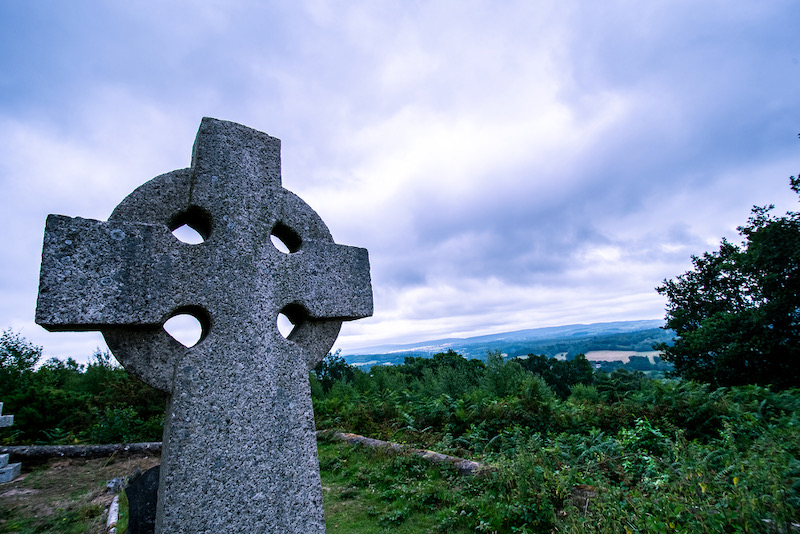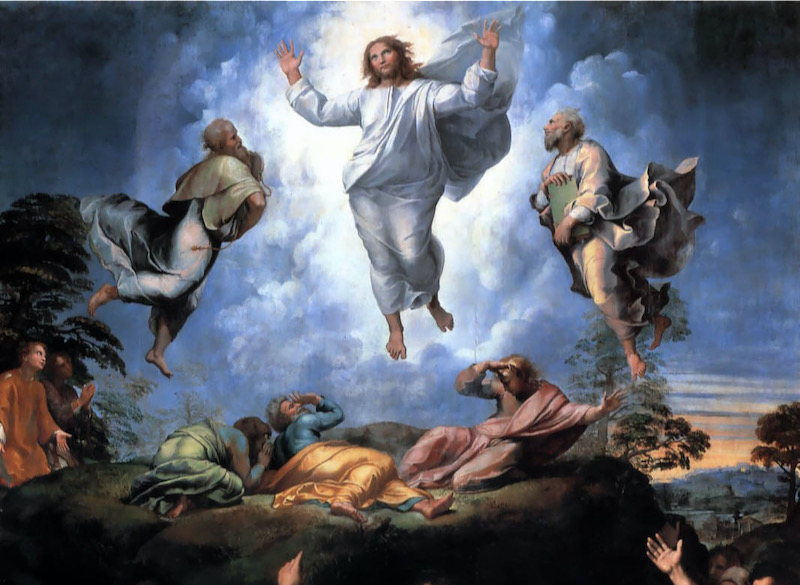The Transfiguration is recounted by all three synoptic gospels at exactly the same place in the narrative and in almost exactly similar detail. That can be said of only a handful of episodes: and they’re all crucial. All of them were included in the text, that is, because of the early Church’s unwavering conviction of their importance for understanding who Jesus is. And yet, few episodes in the gospels are more misunderstood than the Transfiguration.
By far the most common misunderstanding is to see the Transfiguration as a revelation of Jesus’ divinity. It is, indeed, a revelation; and Jesus is, of course, divine. But the misunderstanding lies in thinking that the purpose of the Transfiguration is to reveal that the divine Jesus, as opposed to the human Jesus, is the real Jesus: a truth, on this reading, concealed, until now in the narrative, by his humanity.
According to this view, Jesus at the Transfiguration allows his human mask to slip, so to speak, revealing momentarily his divinity, in order to bolster his disciples’ faith. The Transfiguration is thus said to be a much-needed reassurance for the disciples, in view of what’s about to befall Jesus in Jerusalem, that, in the end, all will be well. He is, after all, God, despite appearances. But this view is perilously close to one of the earliest of all Christian heresies, docetism, the view that, since Jesus was more divine than human, he didn’t really suffer or die, but only went through the motions.
Docetism is what someone has called “space-suit” Christology: the put on, take off space-suit being his humanity. That misunderstanding also corresponds to a particular kind of piety, which itself borders on heresy: a piety rooted in the conviction that what really counts about Jesus is his divinity, because his humanity is temporary, to be finally cast off when the job of saving us is done. And that, in its turn, is allied to yet another kind of piety, also bordering on heresy, namely, a piety that puts more emphasis on the soul than the body, as if our bodies were an encumbrance, dangerous in life and discarded at death.
What both these distortions have in common is that they, like most heresies, including some of the principal heresies of the Reformation, fail to take on board the full implications of God becoming man, and thereby failing to take seriously what the Incarnation tells us not only about God but also about ourselves.
So how should we understand the Transfiguration? What Peter, James and John see at the Transfiguration is a vision of Jesus’ glorified humanity: they see him as he will be, risen from the dead and ascended into heaven. They see, in other words, not divinity concealed by humanity, but divinity revealed in his and our humanity. Which is what the Incarnation is: God reveals himself in our vulnerable and frail flesh and blood.
The disciples were most certainly given this vision as a reassurance. But they were given it because what was about to happen in Jerusalem was really going to happen to Jesus. Tragedy was about to befall him: Jesus was going to be defeated, to fail in his mission to convince Israel of the truth: and the cost of his failure would be the loss of his life. But it’s precisely in the awfulness of his real suffering and dying, that he reveals God: and is glorified.
Peter, of course, can’t even begin to take this on board, neither here at the Transfiguration, nor earlier, when Jesus told the disciples that he would be put to death in Jerusalem. Indeed, all three of Jesus’ closest disciples would be scattered in their disbelief and disillusionment. (Someone once said that the only time that the apostles ever acted collegiately was when they all ran away.)
None of them could get their minds round the fact that Jesus would be glorified in his humanity precisely through his acceptance of ultimate failure, through his acceptance of death. His glory would result, in other words, from his letting go of any notion of worldly or even “spiritual” success. This is the counterintuitive and counter-cultural dynamic intrinsic to Christian existence, the logic of love. The only things in this life that are worth having are the things we must be prepared to let go of. And only what we’re prepared to let go of will we possess eternally.
The Transfiguration, then, is first and foremost about Jesus’ glorified humanity, in which he reveals God to be infinite love. But the Transfiguration also shows us ourselves, shows us both the glory for which we were created and the way to that glory. He shows us that by following Him, by being fully human, as He was, and accepting the consequences, as He did, is the only way to come alive, to come fully alive, as he was.
And that’s why this gospel reporting the Transfiguration falls always on the second Sunday of Lent. Just when our Lenten penance is beginning to bite, when the novelty is wearing off and the five weeks of Lent feel like five years, we’re reminded what Lent’s for: to re-set our hearts on God, and on those in this life whom he has given us to love, not in easy words but in deathdefying and life-affirming deeds.



 Loading ...
Loading ...
What do you think?
You can post as a subscriber user ...
User comments (0)